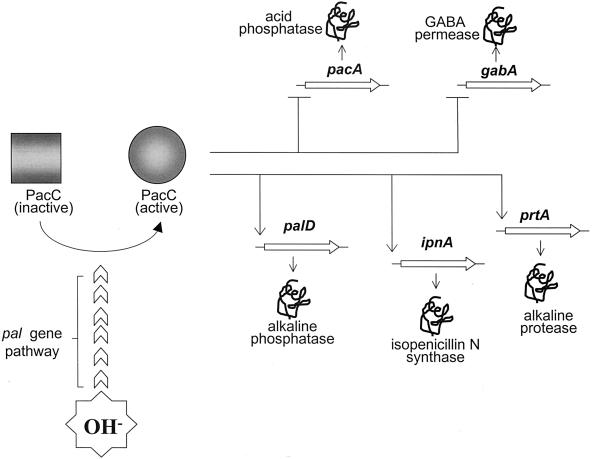FIG. 1.
Formal genetic model of pH regulation in A. nidulans. PacC is synthesized as an inactive form whose activation requires a signal transduced under alkaline pH conditions by the pal signaling pathway. The active form of PacC is a transcriptional repressor of acid-expressed genes, such as pacA and gabA, and a transcriptional activator of alkaline-expressed genes, such as ipnA, prtA, and palD. Mutations inactivating pacC (pacC− or pacC+/−) or the pal signaling pathway lead to absence of expression of alkaline genes and derepression of acidic genes, which results in acidity mimicry. Gain-of-function pacCc mutations bypassing the pal signaling pathway (i.e., leading to active PacC at any ambient pH) result in permanent activation of alkaline genes and superrepression of acidic genes, which leads to alkalinity mimicry.

